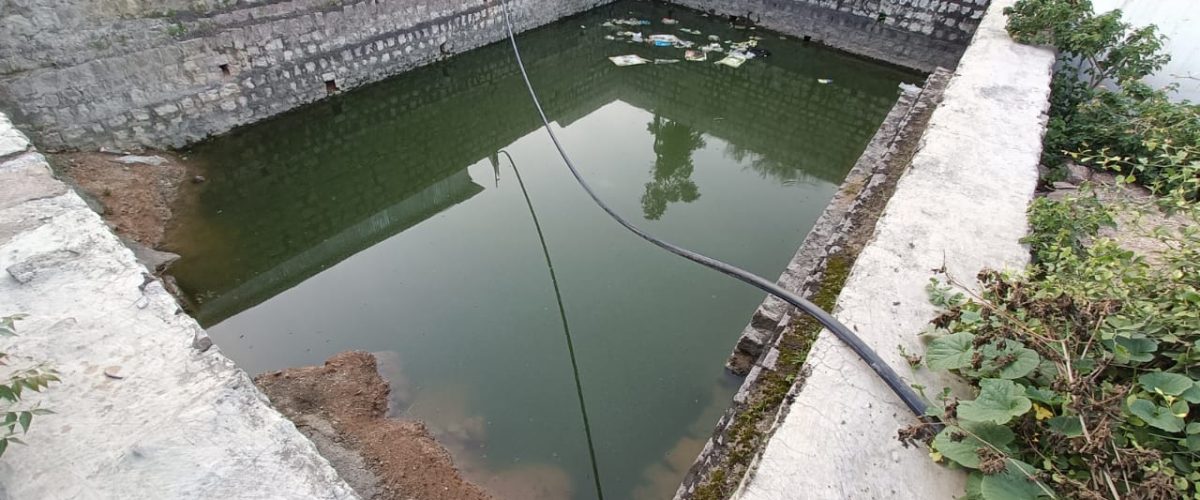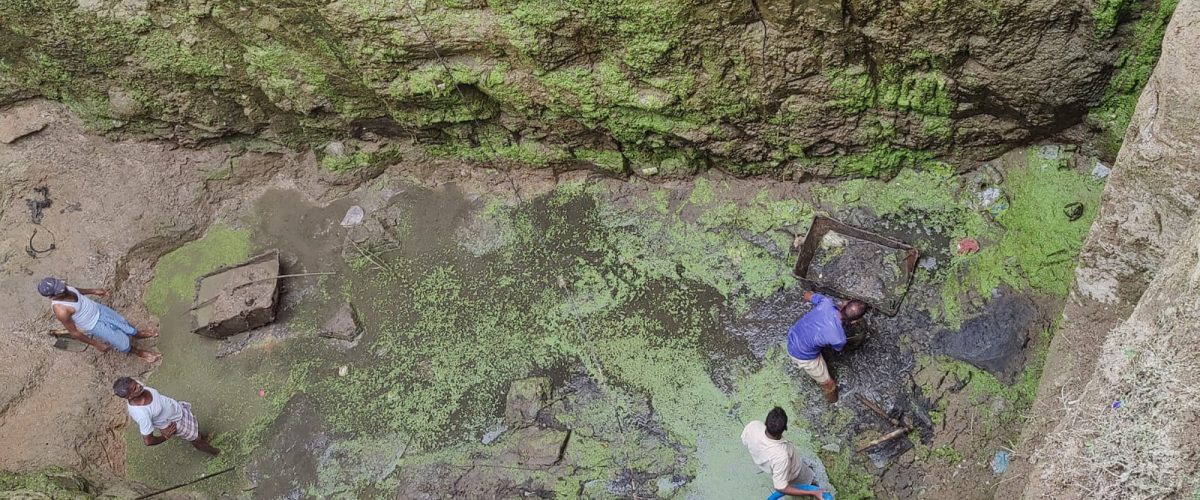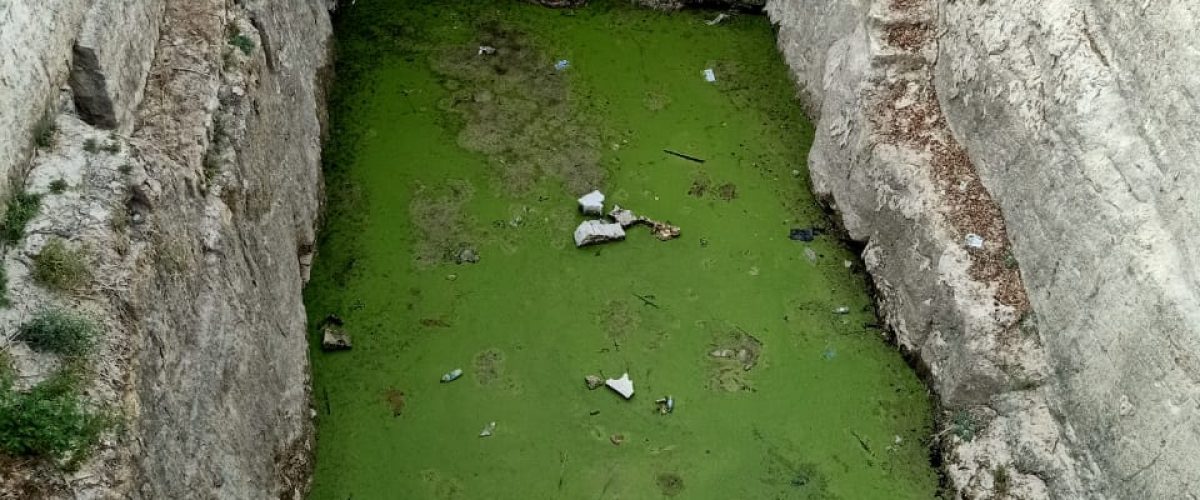Location
Narsingi, Hyderabad, Telangana
Type
Well
Total Water Consumption
2 lac litres
Site Area
1.5 acres
Rooftop Area of Sheds
13,000 sq. meters
Annual Rainwater Potential
8 lac litres
Result - Savings Annually



Problem
The major problems associated with the wells in Goshala – the wells are heavily silted with algal blooms and they need to be revived to open the aquifer layers. The existing bores are very inefficient during summers; hence the Goshala is dependent on tankers to feed their livestock. The top layer of the soil has caked up, not allowing for water percolation into the ground.The deterioration has happened for water over time:
- Well filled up by dense vegetation in and around the well.
- The well is filled up with garbage/plastics and silt, over decades closing the connection with the shallow aquifers it once had which helped irrigate more than 20 acres of land flanking the well.
Objective – Restoration of the well as part of re-establishing groundwater and restoring the water structure rainwater harvesting initiative to store rainwater.
- The well once revived, will establish a connection with the Livestock at Goshala by providing an additional source of water for around 2000 cows.
- The future context of water security outcomes can be fulfilled (i.e., Accessibility, Availability, and Sustainability).
- The dependability of tankers and borewells for the Goshala can be reduced. This will be a sustainable resource of water for the future.
Solution
The condition of the well was in a neglected state with:
- Water available in the well is full of algal bloom and dense vegetation.
- Sparse vegetation all around silt.
- Historical physical structure altered.
- Damaged walls of the well.
- Inefficient bores in summers, hence dependent on tankers.
After understanding the conditions of the site, all the open wells must be de-silted and deepened from time to time. These simple regular maintenance practices rejuvenate these wells. The Rainwater Project deployed teams and began restoring the well by Dewatering and desilting .The dewatering process involved running several motors day and night.The desilting process involved manual labour and mechanical lifts to remove garbage and silt from the well.
The well was dewatered and desilted to effectuate a cleaner catchment and benefit the groundwater in the surrounding area.

